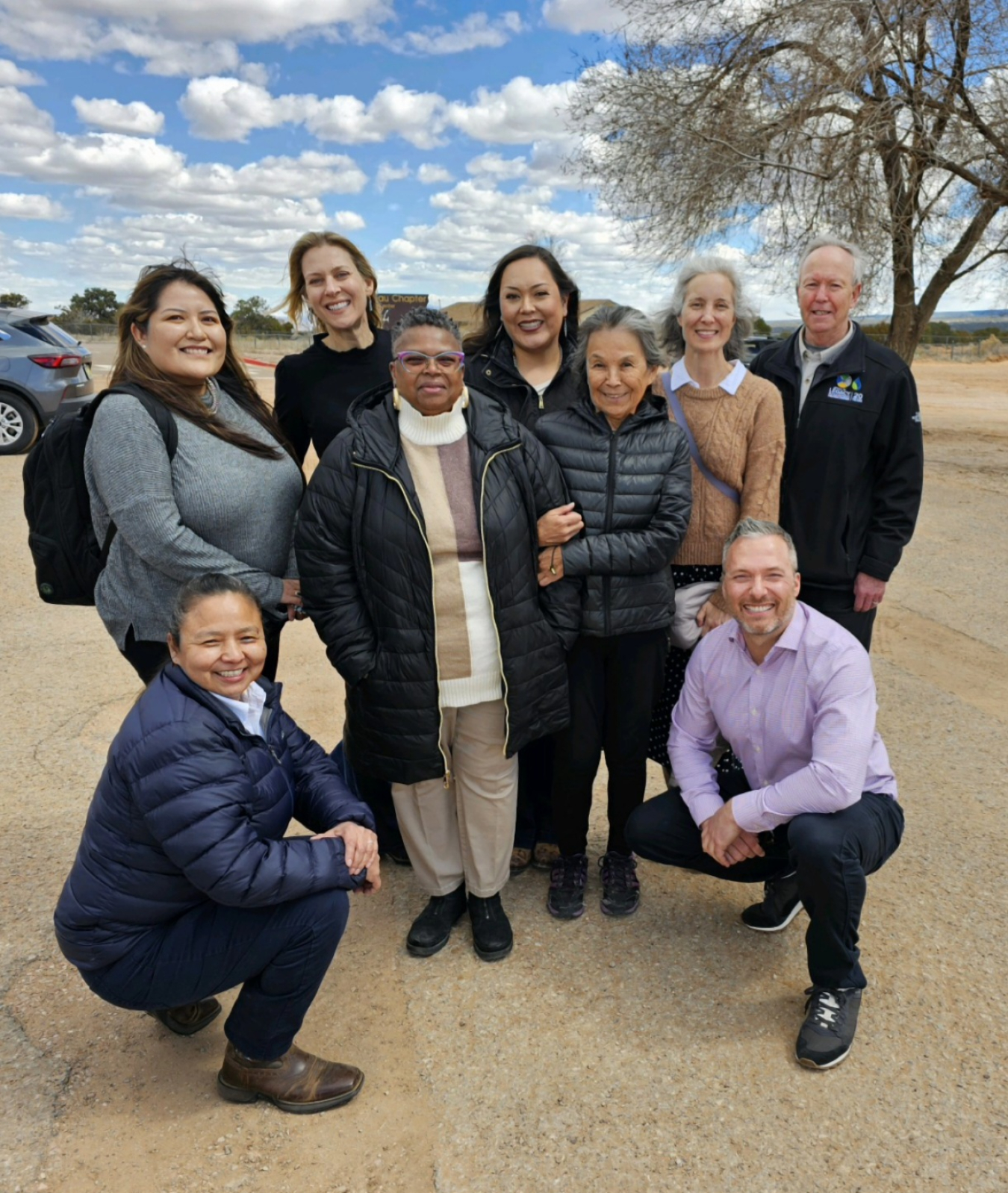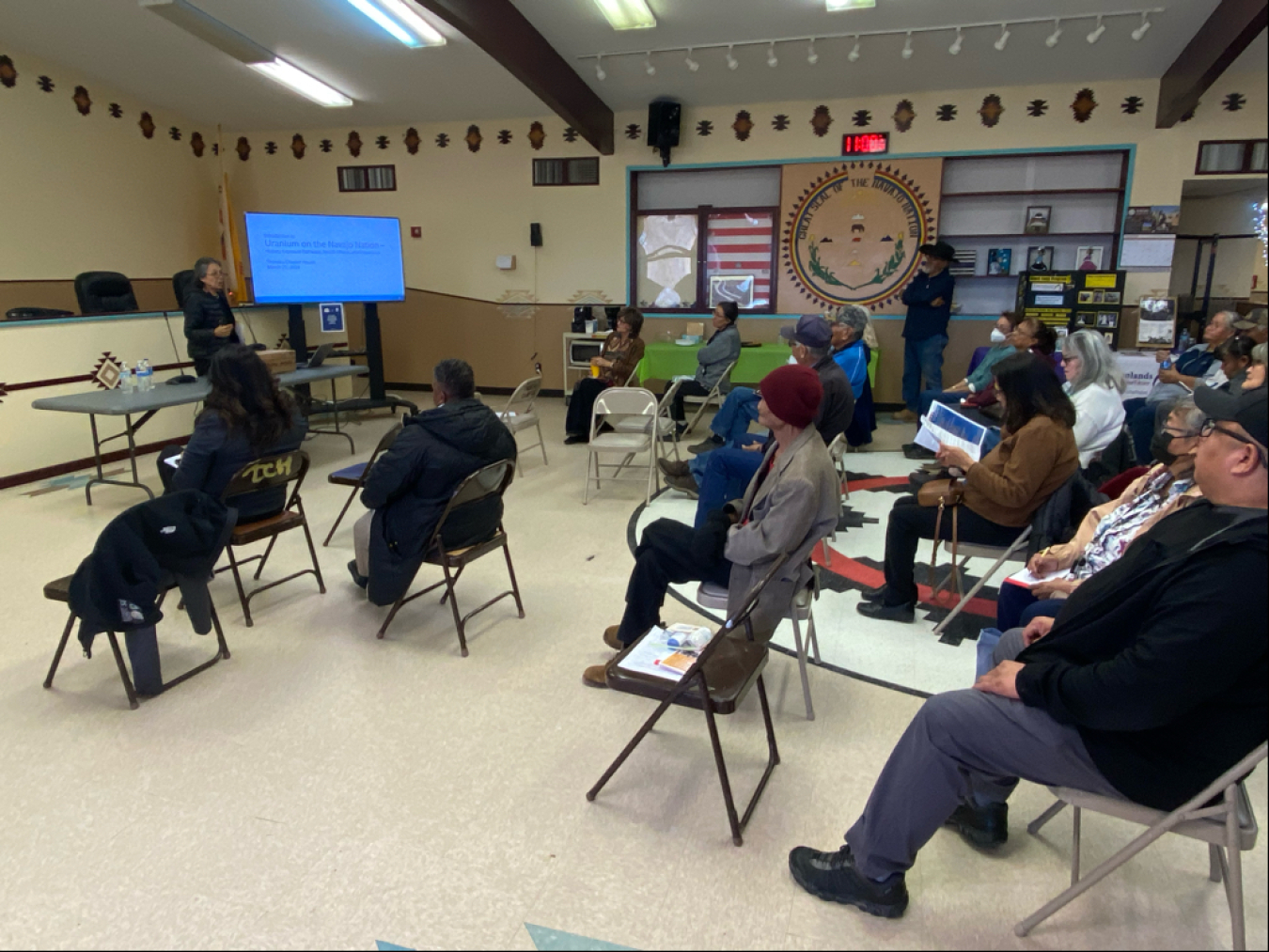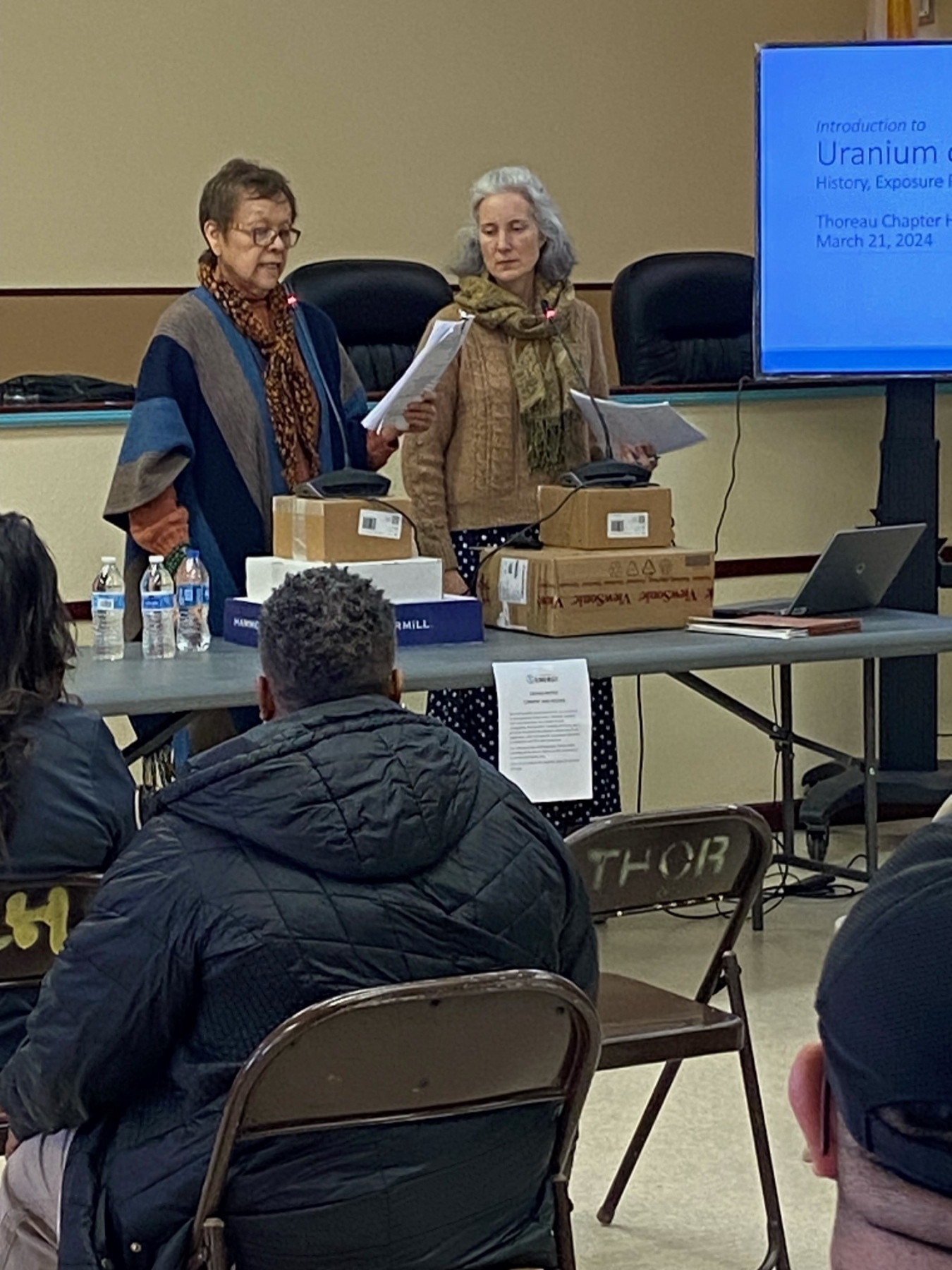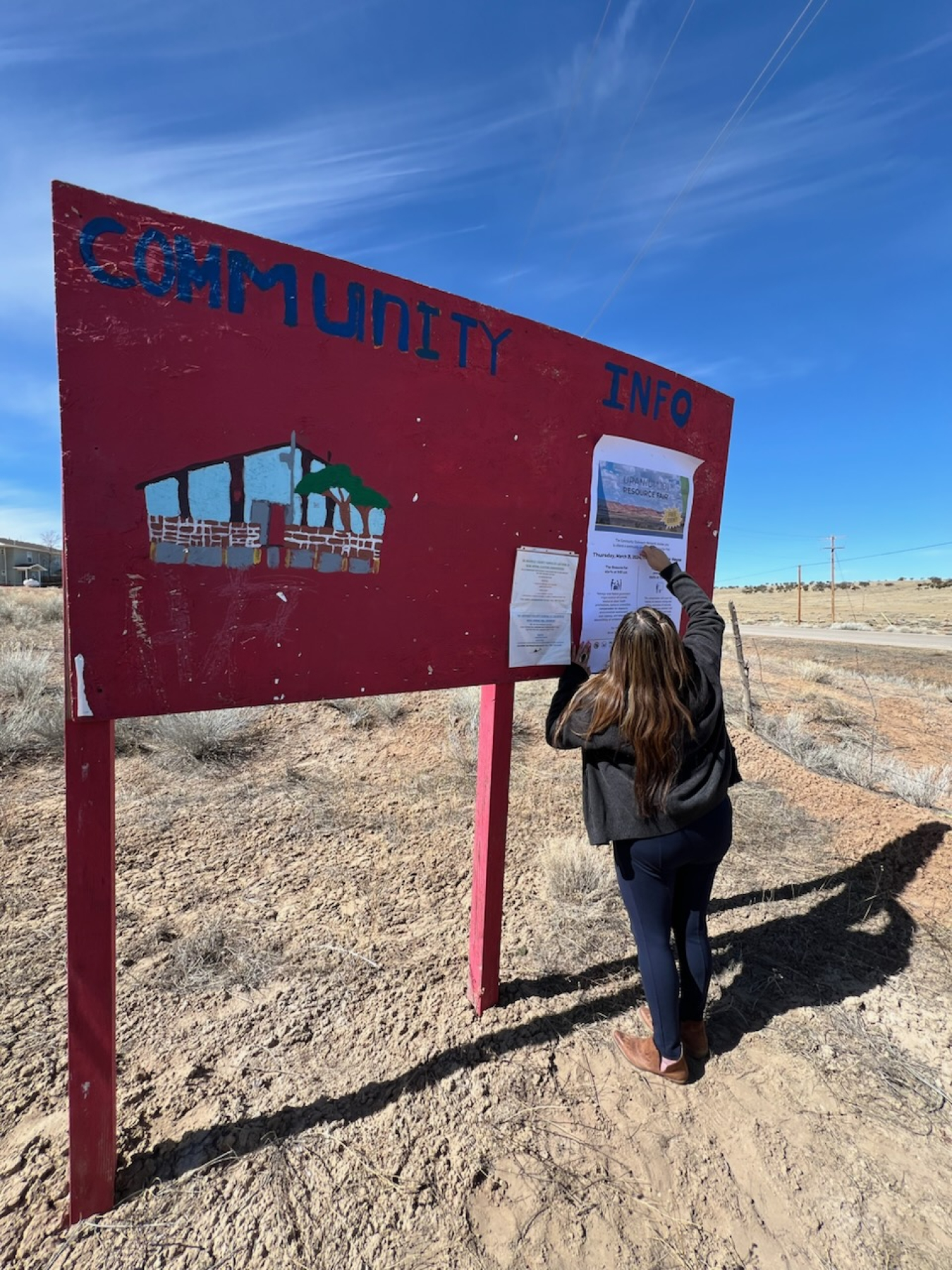LM and Navajo Nation Public Affairs team share information on how to reduce risks from abandoned mines
April 4, 2024
Left to right, bottom row: Angelita Denny, LM site manager and Chris Stewart, LM Strategic Partner (LMSP) Education, Communication, History and Outreach manager.
Left to right, middle row: Gwen Smalls, LM public affairs specialist and Lillie Lane, LMSP public affairs specialist.
Left to right, back row: Shine Salt, LMSP Community Outreach Network liaison; Jennifer Grossheim Harris, LMSP public affairs lead; Kayla Bia, LMSP public affairs coordinator; Jamie Rayman, toxicologist; and Stephen Browning, LMSP program manager.
The U.S. Department of Energy (DOE) Office of Legacy Management and its Navajo Nation Public Affairs team led the fifth Community Outreach Network Uranium 101 Resource Fair in partnership with the Thoreau Chapter House Thursday, March 21. The Community Outreach Network includes federal agencies and Navajo Nation departments and programs that share a goal to educate and inform Navajo communities about the risks former uranium mines pose and how to protect people from exposure.
Jamie Rayman, a toxicologist with the Agency for Toxic Substances and Disease Registry, delivered the Uranium 101 presentation to attending community members. The Navajo Nation Public Affairs team arranged for a Navajo interpreter to help deliver the presentation in the Navajo language. Rayman and the interpreter, Joanna Austin-Manygoats, worked tirelessly together to assure that the translation was accurate and relatable for Navajo speakers.
The presentation describes the history of uranium mining and health risks that abandoned uranium mine (AUM) sites pose to people living near them. According to the U.S. Environmental Protection Agency (EPA) and the Navajo Nation Environmental Protection Agency, there are 524 AUM sites across all five regions of the Navajo Nation. Thoreau is located within the Eastern Agency, which has about 34 AUM sites.

Navajo Nation Public Affairs Lillie Lane offers a welcome and announcements to community members.
In 2007, Congress conducted a hearing to better understand abandoned uranium mines, at which Navajo leaders and Navajo people testified. At the end of the hearing, Congress directed DOE, EPA, the U.S. Nuclear Regulatory Commission, the U.S. Department of Health and Human Services, and the U.S. Department of the Interior to coordinate with the Navajo Nation to investigate and address AUM and their effects on people and the environment. The tribal entities the agencies work with include the Offices of the Navajo Nation president and vice president, Navajo Nation Abandoned Mine Lands Department, Navajo Nation Department of Health, Navajo Nation Environmental Protection Agency, and Navajo Nation Department of Justice.
The Community Outreach Network was formed in 2015 to plan and coordinate outreach events to enhance the community understanding of the work agencies are doing to address uranium issues. Together, the activities have resulted in an unprecedented level of community outreach.
In preparation for the Uranium 101 event, network partners distributed fliers to their community contacts in neighboring chapters as well as area media. Large posters were hung outside the Thoreau Chapter to encourage members of the community to attend the event.

From left: Joanna Austin-Manygoats, Navajo interpreter, and Jamie Rayman, a toxicologist with the Agency for Toxic Substances and Disease Registry, deliver the Uranium 101 presentation to community members.
On the day of the resource fair, attending tribal and federal partners were able to share information, answer questions about mining and health programs, and hand out brochures. Eleven tribal and federal network members attended the event:
- Navajo Birth Cohort Study/ECHO+ and METALS.
- Agency for Toxic Substances and Disease Registry.
- Navajo Nation EPA — Superfund Program and Air and Toxics Program.
- U.S. EPA.
- U.S. Department of Energy Office of Legacy Management and Support Partners.
- Indian Health Service, Radiation Exposure Screening and Education Program, and the Community Uranium Education — Journey to Healing.
- Navajo Abandoned Mine Lands Reclamation Department.
- Navajo Uranium Workers Program.
- Abandoned Uranium Mines Phase 2 Expanded Trust.
- Community Health Representative Program.
- Black Lung Outreach Program, Canyonlands Healthcare.

Shine Salt, Community Outreach Network liaison, hangs a flier on a public board outside Mariano Lake Chapter House.
Two more Chapter Houses on the Navajo Nation have requested the outreach fair and presentation be delivered to their communities. Those events will be scheduled over the remainder of the year based on the input and availability of network members.
For more information about the work the U.S. is doing on the Navajo Nation, check out Ten-Year Plan: Federal Actions to Address Impacts of Uranium Contaminations on the Navajo Nation.

